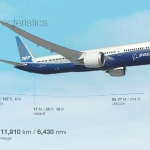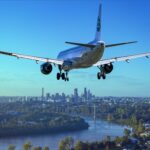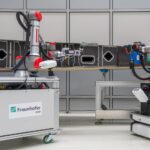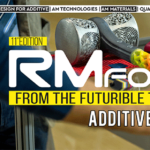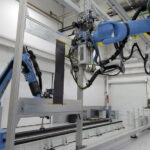Boeing’s 787-10 Dreamliner, the third member of the 787 Dreamliner family, made its debut at Boeing’s plant in South Carolina. Thousands of employees at the North Charleston, S.C. site celebrated the event, along with President Donald Trump and South Carolina Governor Henry McMaster.
According to Boeing, the 787-10, which is the longest model of the Dreamliner family, will grow the nonstop routes opened by the 787-8 and 787-9 with “unprecedented efficiency.” The company estimates that since entering service in 2011, the 787 family has flown more than 140 million people on 530 routes around the world, saving an estimated 13 billion pounds of fuel.
“What’s happening here at Boeing South Carolina is a true American success story,” said Dennis Muilenburg, Boeing chairman, president and CEO. “In just a few short years, our team has transformed a greenfield site into a modern aerospace production facility that is delivering 787s to airlines all over the world and supporting thousands of U.S. jobs in the process.”
The 787-10 Dreamliner underwent final assembly in December. The following month, Boeing reported its shares reached an all-time high due in no small part to the Dreamliner’s recovery from a decade of profit loss. During the fourth quarter of 2016, Boeing delivered its 500th 787 Dreamliner.
The 787 Dreamliner is the first major commercial airplane to have a composite fuselage, composite wings, and use composites in most other airframe components. A 2007 report from Toray notes that each 787 contains approximately 77,000 pounds of carbon fiber reinforced polymer (CFRP), made with 23 tons of carbon fiber. A 2007 report from Toray notes that each 787 contains approximately 77,000 pounds of carbon fiber reinforced polymer (CFRP), made with 23 tons of carbon fiber.
According to Boeing, the 787-10 Dreamliner, which is built exclusively in South Carolina, will now be prepared for its first flight in the coming weeks.
“This airplane, the most efficient in its class, is the result of years of hard work and dedication from our Boeing teammates, suppliers and community partners in South Carolina and across the globe,” said Kevin McAllister, Boeing Commercial Airplanes president and CEO. “We know our customers, including launch customer Singapore Airlines, are going to love what the 787-10 will do for their fleets, and we can’t wait to see them fly it.” Boeing says it will deliver the 787-10 to airlines in 2018. The airplane has won 149 orders from nine customers across the globe.



